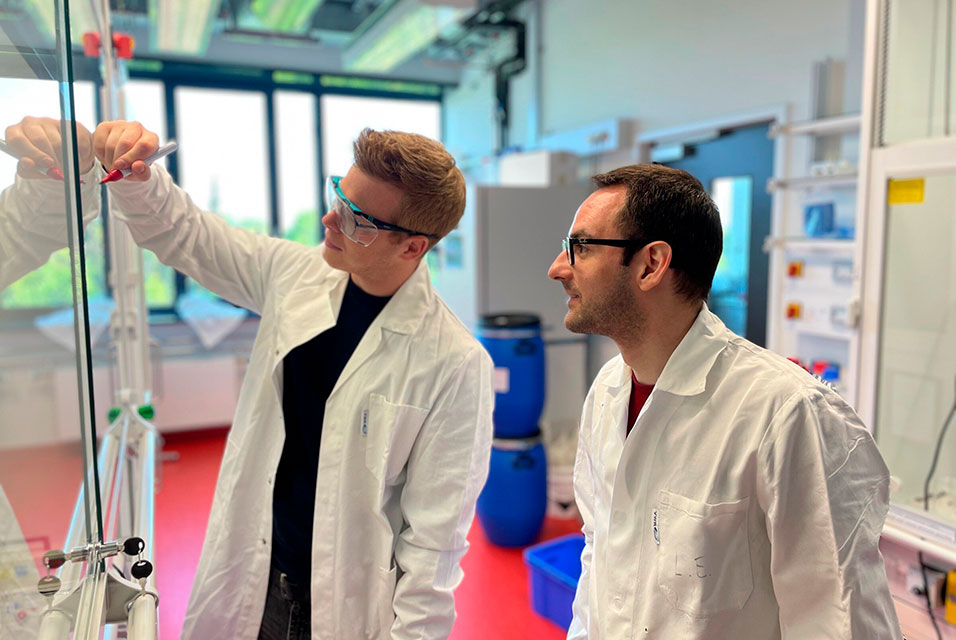CAMBRIDGESHIRE.- The Human Cell Atlas goal of mapping every cell type in the human body to transform our knowledge of biology, infection and disease is a milestone step closer with four studies published in Science today.
Researchers with the international Human Cell Atlas (HCA) consortium have created highly detailed maps of more than a million individual cells across 33 organs and systems across the human body, giving new biological insights into human health and disease, including the immune system.
These complementary multi-tissue cell atlases will contribute towards a single Human Cell Atlas and have many therapeutic implications including informing our understanding of common and rare diseases, vaccine development, anti-tumor immunology and regenerative medicine.
Until now, the HCA has mostly focused on gaining a deep cellular understanding of individual organs, tissues or small subsets of tissues. Now, four major collaborative studies by researchers at the
Wellcome Sanger Institute, UK; the Broad Institute of MIT and Harvard, U.S.; The Chan Zuckerberg Biohub, U.S.; and their international collaborators, have developed methods and created the most comprehensive, cross-tissue atlases to date.
Openly available, the atlases allow researchers to compare specific cell types across the body in fine detail, revealing novel cell functions and shedding light on health and disease.
Deep dive into the immune system across tissues
Historically our understanding of the human immune system has been mainly limited to the role of cells circulating in blood, however immune cells within tissues play a key role in maintaining health and combating infection. In one of the Science papers, researchers from the Wellcome Sanger Institute, the University of Cambridge and their collaborators sequenced RNA from 330,000 single immune cells from across the adult body to understand the function of immune cells in different tissues.
After creating a curated catalogue of immune cells within the human body, the team developed a machine-learning tool—CellTypist—to automate cell type identification. Using this tool, they identified about a hundred distinct types of immune cells, including specific macrophages, T cells and B cells and their distribution across different tissues.
Dr. Sarah Teichmann, Co-Chair of the Human Cell Atlas Organizing Committee, Head of Cellular Genetics at the Wellcome Sanger Institute, and a senior author on the paper, said: "A detailed understanding of cells through the Human Cell Atlas will help explain many aspects of human health and disease. By comparing particular immune cells in multiple tissues from the same donors we identified different flavors of memory T cells in different areas of the body, which could have great implications in managing infections. Our openly available data will contribute to the Human Cell Atlas and could serve as a framework for designing vaccines, or to improve the design of immune therapies to attack cancers."
A second study from the Sanger Institute, the University of Cambridge and their collaborators appears online in Science today, which created a comprehensive atlas of the developing human immune system across organs, revealing tissues involved in the formation of blood and immune cells and enhancing our understanding of immune disorders. It also reveals cell types that are lost as we grow up, to inform in-vitro cell engineering and regenerative medicine research.
An atlas from frozen tissues sheds light on rare and common disease genes
One of the promises of single cell atlases is to help map the specific cell types in which disease genes—from those causing rare diseases like muscular dystrophy or contributing to the risk of common diseases like heart disease—act across the human body. It needs all cell types to be profiled, including cells from skeletal muscle, fat cells and neurons which are hard to capture. Cells from larger numbers of individuals are also vital, requiring scientists to collect and freeze tissues before analysis.
In one of the new papers in Science, researchers from the Broad Institute and their collaborators reveal how they optimized single-nucleus RNA sequencing to overcome the challenge of using frozen cells, and then created a cross-tissue atlas to analyze 200,000 cells from multiple banked frozen tissues focusing on rare and common disease genes. Using novel machine learning algorithms, the team then systematically associated the cells in the atlas with 6,000 single-gene diseases and 2,000 complex genetic diseases and traits to identify cell types and gene programs that could be involved in disease, revealing multiple novel starting points for new studies into health and disease.
Dr. Aviv Regev, Co-Chair of the Human Cell Atlas and Faculty on Leave from the Broad Institute and MIT, who is now Head of Genentech Research and Early Development, and a senior author on the paper, said: "Our single-nucleus Human Cell Atlas study demonstrates a powerful large-scale way to analyze cells from frozen tissue samples across the body with deep-learning computational advances, and opens the way to studies of tissues from entire patient cohorts at the single cell level. We were able to create a new roadmap for multiple diseases, by directly relating cells to human disease biology and disease-risk genes across tissues. We anticipate this work will lead to many new studies and enable the ongoing efforts of the human cell atlas to build a reference map of all human cells."
The Tabula Sapiens: broad cross-tissue cell atlas
The final paper in this set describes a very large cross-tissue study by researchers from the Chan Zuckerberg Biohub and their collaborators. The team used single cell RNA sequencing of live cells to analyze many organs from the same donor, which enabled cross-tissue comparisons controlled for genetic background, age and environmental effects. The collection of nearly half a million cells provides a uniquely broad cross-tissue atlas from live cells, and has created a data set the researchers call 'The Tabula Sapiens'.
The Tabula Sapiens data allowed detailed characterization of more than 400 specific cell types, their distribution and variation in gene expression across the tissues. In addition, by analyzing live cells, their data also enabled the first large-scale analysis of alternative gene splicing in a single cell atlas. The study provides researchers with a huge research resource of human expert annotated cell types which will give major new insights into fundamental biology and disease.
Professor Stephen Quake, President of the CZ Biohub Network, and Lee Otterson Professor of Bioengineering and Professor of Applied Physics at Stanford University, and a senior author on the paper, said: "The Tabula Sapiens is a reference atlas that provides a molecular definition of hundreds of cell types across 24 organs in the human body. It represents the efforts of more than 150 authors across several institutions; the scientific community will be discovering new insights into human biology from this resource for many years to come."
HCA cross-tissue data and tools are openly available
The HCA is an international collaborative consortium that charts the cell types in the healthy body, providing an unprecedented resource for studying health and disease. An open, cutting-edge, scientist-led consortium, HCA is a collaborative effort of researchers, institutes, and funders worldwide, with more than 2,300 members from 83 countries across the globe.
With commitments to open access, ethics and global equity, HCA data is openly available to benefit people everywhere. The data from these and other studies are freely available on the HCA Data Portals, which researchers worldwide can access through the HCA Data Coordination Platform as well as through the Cambridge Cell Atlas, the Broad Single Cell Portal, and the UCSC Cell Browser.
Professor Sten Linnarsson, from Karolinska Institutet in Sweden, and a member of the HCA Organizing Committee, said: "The Human Cell Atlas is transforming our understanding of biology and disease. These cross-tissue studies represent a milestone for the HCA and single cell biology by enabling systematic, in-depth comparison of the same cell types across development and adulthood. They are a great step forwards to generating a Human Cell Atlas of all cell types in the human body, laying a foundation for a new era of diagnosis, healthcare and precision medicine."










